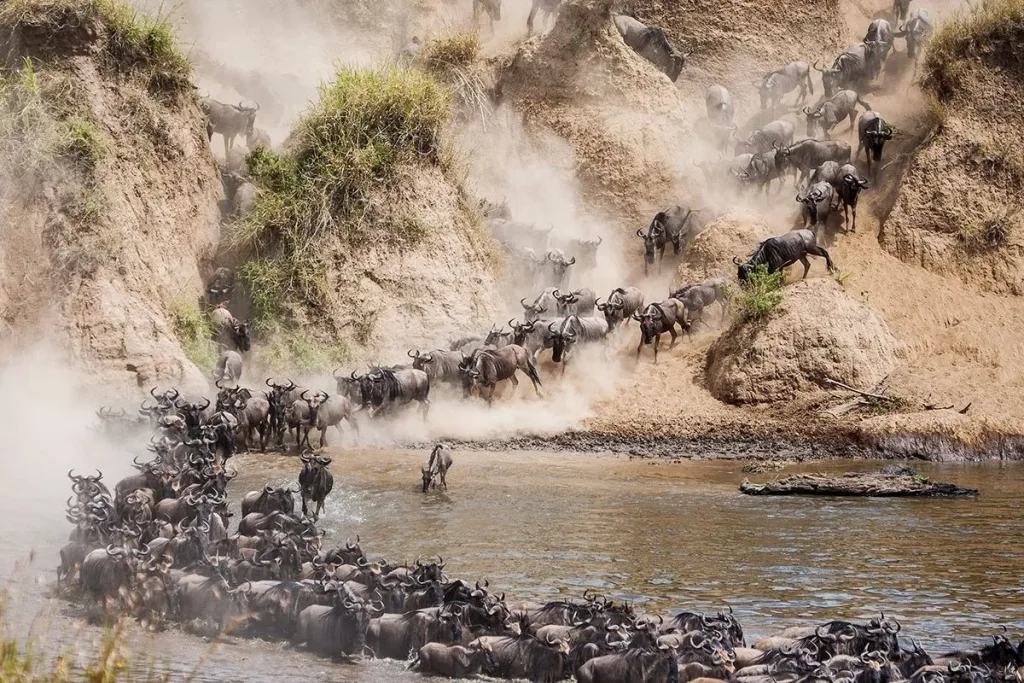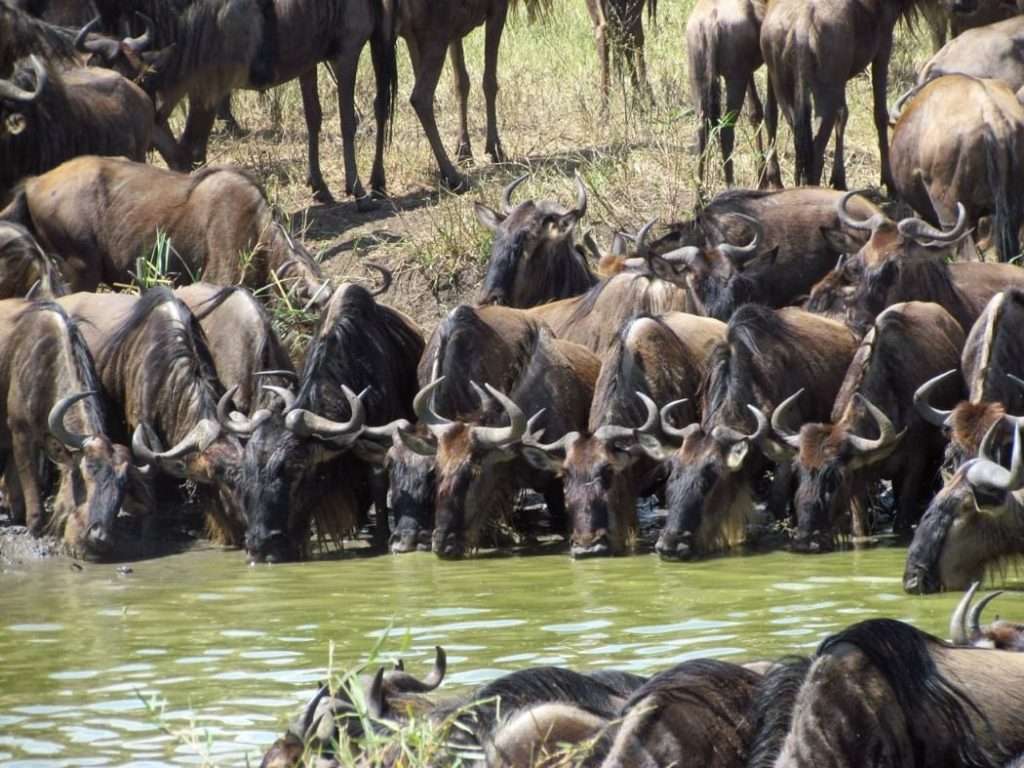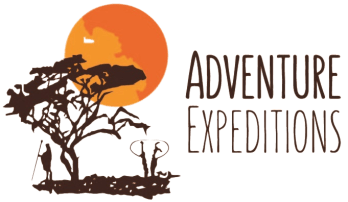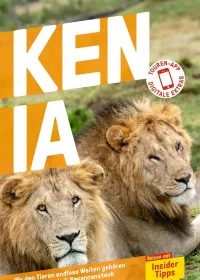
Every year, the vast savannahs of Kenya’s Maasai Mara become the stage for one of the most extraordinary natural spectacles on Earth: the Great Migration. This annual movement of over 1.5 million wildebeest, accompanied by hundreds of thousands of zebras and gazelles, is a powerful display of nature’s rhythm, resilience, and instinct.
The origins of this migration trace back thousands of years. Long before the Maasai Mara was formally established as a game reserve in 1961, these herds followed age-old routes across the Serengeti-Mara ecosystem in search of fresh grazing and water. This ecosystem, stretching across northern Tanzania and southwestern Kenya, has remained largely open and wild, allowing migratory patterns to persist much as they have for centuries. The Maasai people, who have inhabited this region for generations, have traditionally coexisted with the wildlife, their pastoral lifestyle in harmony with the pulse of the land.
Today, the highlight of the migration occurs between July and October, when the herds move north from Tanzania’s Serengeti into Kenya’s Maasai Mara. Here, they must cross the treacherous Mara River — a scene of sheer drama and raw survival. As thousands gather along the riverbanks, hesitation builds until one brave individual takes the leap. In an instant, a stampede follows. The current is strong, the banks are steep, and crocodiles lie in wait. Many make it across, but not all survive. It’s a powerful reminder of the harsh beauty of the natural world.

While the migration is a major draw for safari-goers, the Maasai Mara offers far more than just the spectacle of moving herds. The region is home to an incredible diversity of wildlife, including lions, cheetahs, elephants, buffalo, and elusive leopards. Birdlife is abundant, and the golden plains provide a stunning backdrop for every game drive.
Safaris in the Mara today also offer a chance to engage with responsible tourism. Many lodges are community-owned or support local conservation efforts, ensuring that tourism benefits both nature and the Maasai communities. By visiting the Maasai Mara, travellers not only witness one of the planet’s greatest wildlife events but also support the long-term preservation of this extraordinary ecosystem.
To experience the Great Migration is to connect with something ancient, wild, and deeply moving. It is a journey through the heart of Africa, where life and death dance on the open plains and the spirit of the land speaks through the thunder of hooves.
If you want to witness it, get in touch with us!








